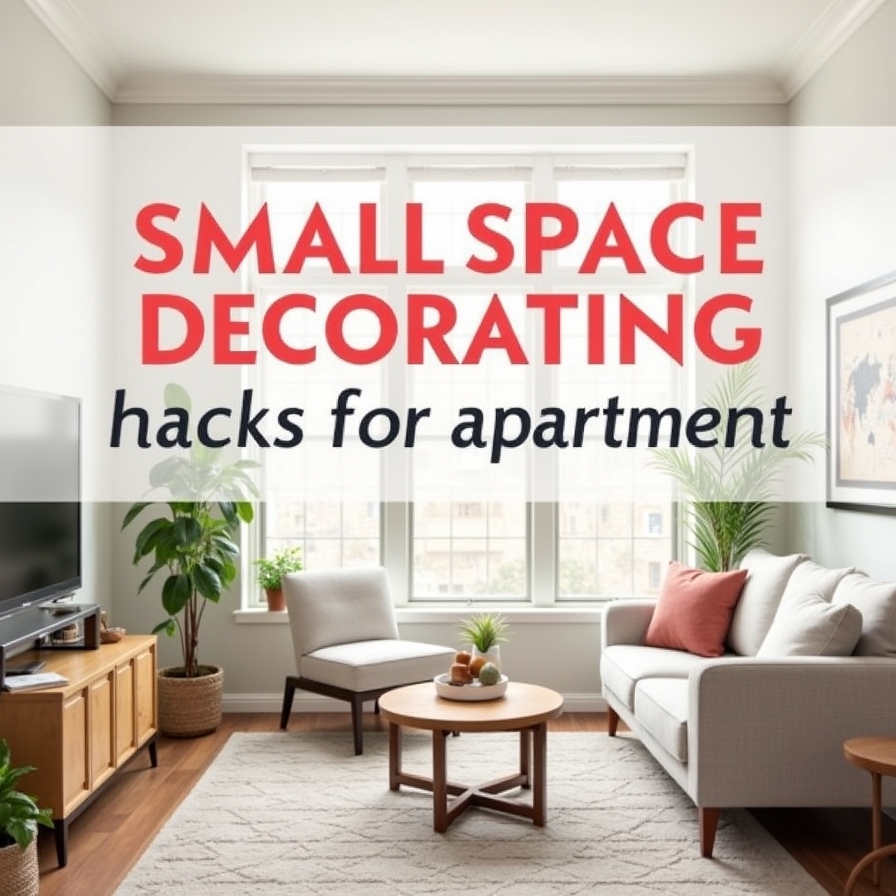Living in an apartment often comes with its own set of challenges, especially when it comes to space. You might find yourself constantly rearranging furniture, struggling to find storage, or feeling like your home is always cluttered. But what if we told you that small space living doesn’t have to be a constant battle? In fact, with a few clever hacks, you can transform your compact apartment into a stylish, functional, and comfortable haven.
While most articles focus on the basics like storage solutions and multi-functional furniture, this guide will take you a step further. We’ll explore innovative, personalized approaches to maximize both space and style. So, let’s dive in and discover how you can make the most of your small space!
I. The Illusionists: Visual Tricks for Expanding Perception
A. Strategic Mirror Placement
Mirrors are a small space’s best friend. They reflect light and create the illusion of depth, making your apartment feel larger than it actually is. But it’s not just about hanging a mirror on the wall. To maximize the effect, consider the following:
- Angles and Placement: Place mirrors opposite windows to reflect natural light and brighten up the room. You can also angle mirrors to reflect interesting parts of the room, like a piece of art or a cozy reading nook.
- Size Matters: Larger mirrors can make a bigger impact. Consider a floor-to-ceiling mirror or a large wall mirror to create a dramatic effect.
- Mirrored Furniture: Don’t limit yourself to wall mirrors. Mirrored furniture, like a console table or a coffee table, can also help bounce light around the room and add a touch of elegance.
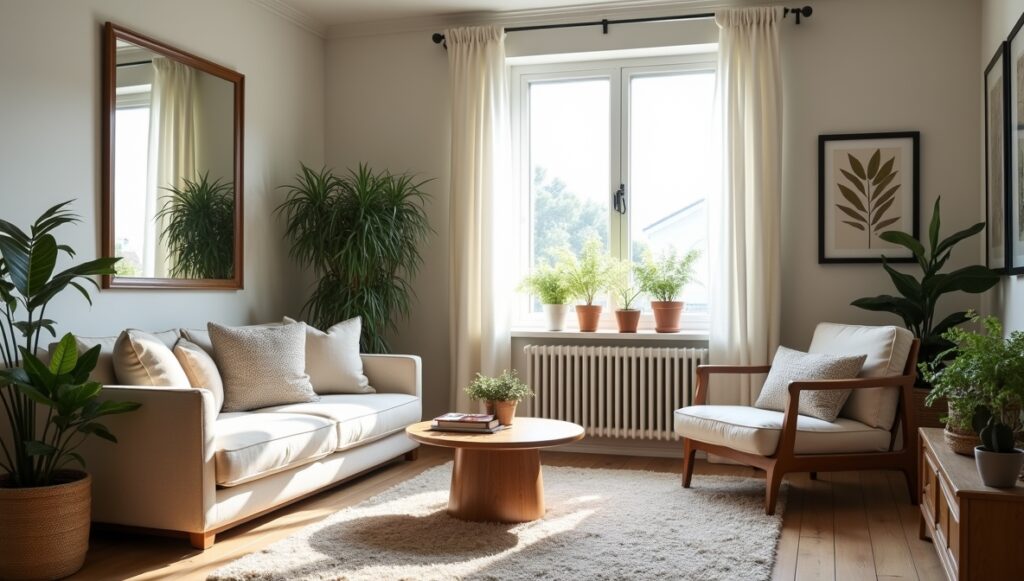
B. Color Psychology in Compact Spaces
Color plays a crucial role in how we perceive space. While light colors are often recommended for small spaces, there’s more to it than just painting everything white.
- Light Colors: Light, neutral colors like white, beige, and light gray can make a room feel more open and airy. Use these colors on walls, ceilings, and large furniture pieces.
- Accent Colors: Don’t be afraid to add pops of color. Use accent colors in small doses, like throw pillows, artwork, or a single accent wall. This can add personality without overwhelming the space.
- Color Flow: Use a consistent color palette throughout your apartment to create a sense of flow. This can make the space feel more cohesive and larger.

C. The Power of Vertical Lines
Vertical lines can draw the eye upward, making ceilings appear higher and rooms feel more spacious.
- Vertical Patterns: Incorporate vertical stripes in your decor, whether it’s through wallpaper, curtains, or even a striped rug.
- Tall Furniture: Choose tall bookshelves, floor lamps, or armoires to emphasize height. This can also provide additional storage without taking up too much floor space.
- Vertical Gardens: If you love plants, consider a vertical garden. It’s a great way to add greenery without sacrificing floor space.
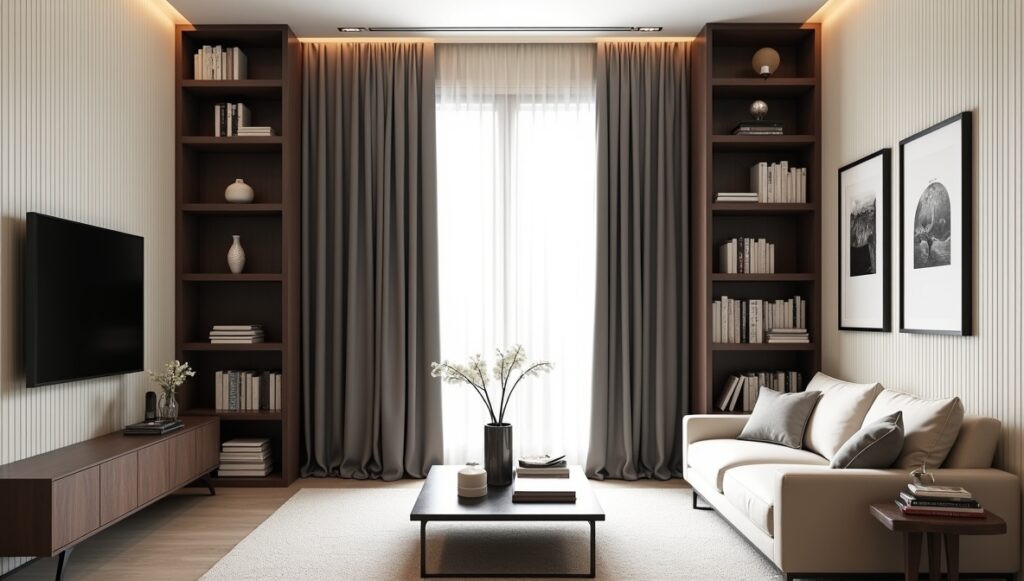
II. Multi-Functional Marvels: Furniture That Works Overtime
A. Hidden Storage Solutions
In a small space, every inch counts. Furniture with hidden storage can help you keep your apartment organized without sacrificing style.
- Ottomans with Storage: An ottoman with a hidden compartment can serve as a footrest, extra seating, and a place to store blankets or magazines.
- Sofa with Under-Seat Drawers: Some sofas come with built-in drawers under the seats, perfect for storing books, toys, or other items.
- Built-In Storage: Consider custom-built storage solutions that fit perfectly into your space. For example, a bench with built-in storage under the window or a bed with drawers underneath.
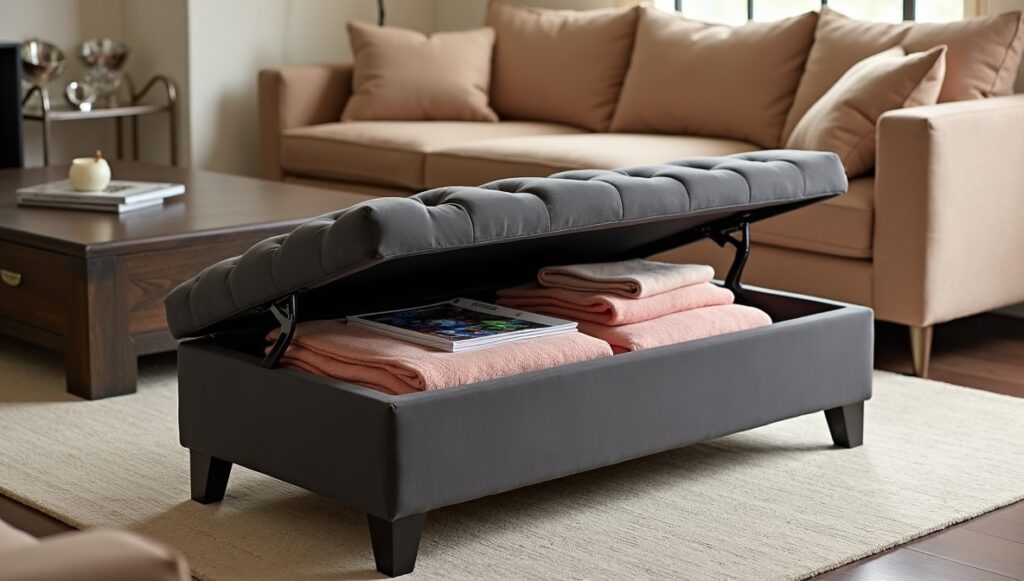
B. Transformative Furniture
Transformative furniture is a game-changer for small spaces. These pieces can change function to suit your needs, saving space and adding versatility.
- Murphy Beds: A Murphy bed folds up into the wall when not in use, freeing up floor space during the day.
- Expandable Tables: A dining table that can expand when you have guests and fold down when you don’t need it is perfect for small apartments.
- Convertible Chairs: Some chairs can transform into a bed or a desk, making them ideal for multi-functional spaces.
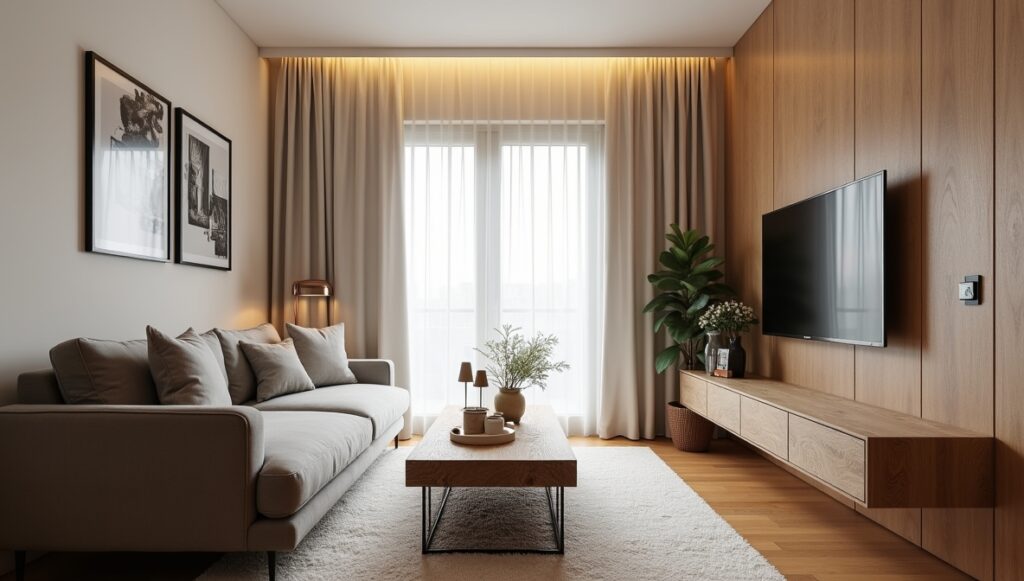
C. Modular and Customizable Pieces
Modular furniture can adapt to your changing needs and configurations, making it a great choice for small spaces.
- Modular Sofas: A modular sofa can be rearranged to fit different layouts, whether you need a large seating area or a compact loveseat.
- Custom Furniture: If you have an awkward nook or an unusually shaped room, consider custom-built furniture that fits perfectly into the space.
III. Lighting as a Space Expander: Illuminating Possibilities
A. Layered Lighting Techniques
Good lighting can make a small space feel larger and more inviting. Instead of relying solely on overhead lighting, consider layering different types of lighting.
- Ambient Lighting: This is the general lighting that fills the room. Use ceiling lights or chandeliers to provide overall illumination.
- Task Lighting: Task lighting is focused light for specific activities, like reading or cooking. Use desk lamps, under-cabinet lighting, or floor lamps for this purpose.
- Accent Lighting: Accent lighting highlights specific areas or objects, like artwork or architectural features. Use wall sconces, picture lights, or LED strips to create depth and interest.
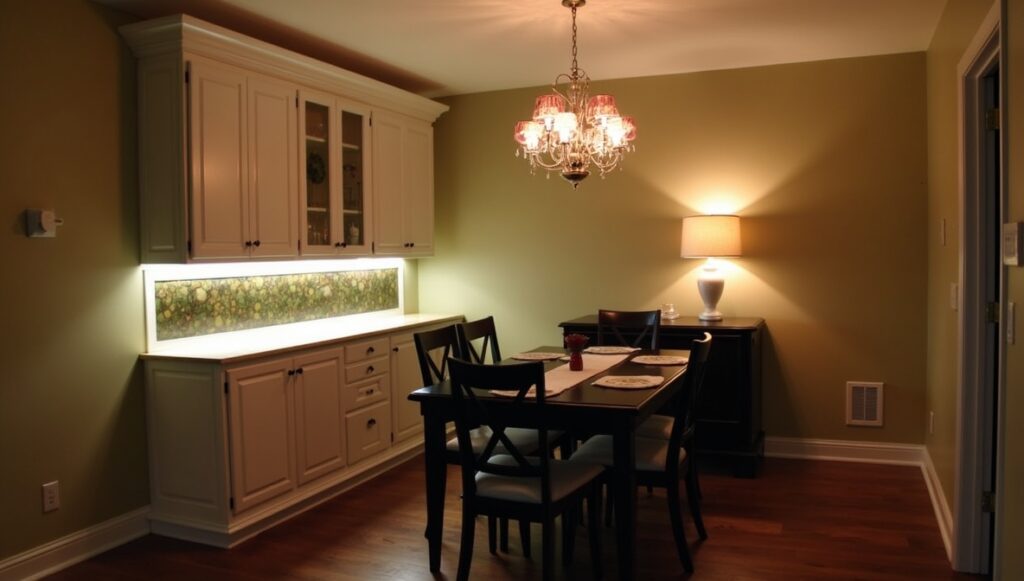
B. Natural Light Maximization
Natural light can make a small space feel brighter and more open. Here’s how to make the most of it:
- Window Treatments: Choose light, sheer curtains that allow natural light to flow through. Avoid heavy drapes that can block light and make the space feel smaller.
- Clean Windows: Keep your windows clean to allow maximum light to enter. Dirty windows can reduce the amount of natural light that gets through.
- Reflective Surfaces: Use reflective surfaces like glass or metallic finishes to bounce light around the room. A glass coffee table or a metallic lamp can help brighten up the space.
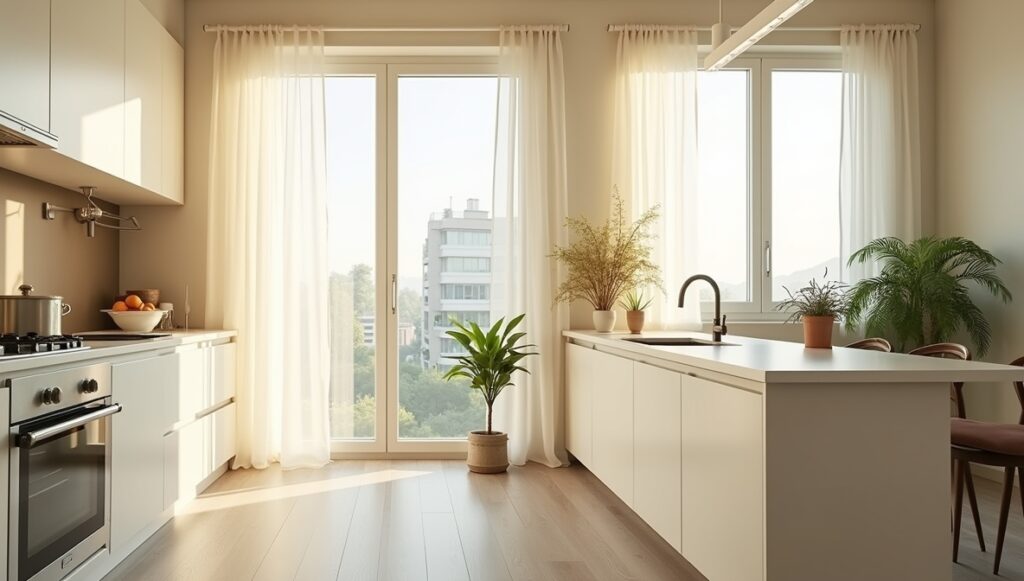
C. Reflective Surfaces and Light Play
Reflective surfaces can enhance the effect of both natural and artificial light, making your space feel larger and more open.
- Metallic Finishes: Incorporate metallic finishes in your decor, like a chrome lamp, a brass mirror, or stainless steel appliances.
- Glass Furniture: Glass tables, shelves, or doors can create a sense of openness and allow light to pass through.
- Mirrored Accents: In addition to mirrors, consider mirrored accents like picture frames, trays, or decorative objects.
IV. The Art of Organized Minimalism: Decluttering for Clarity
A. Strategic Decluttering Systems
Decluttering is essential for small spaces, but it’s not just about getting rid of stuff. It’s about creating a system that works for you.
- KonMari Method: This method involves keeping only items that “spark joy.” Go through your belongings category by category and decide what to keep, donate, or discard.
- Swedish Death Cleaning: This approach involves decluttering with the mindset of not leaving a burden for others. It’s a more philosophical approach to minimalism.
- Digital Decluttering: Don’t forget about digital clutter. Organize your digital files, delete unnecessary emails, and streamline your digital life.
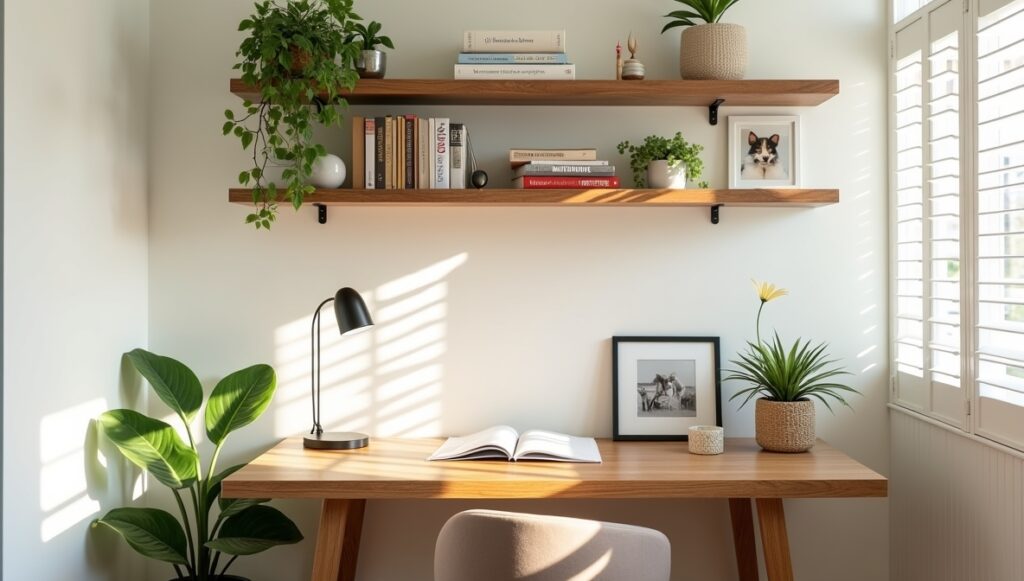
B. Vertical Storage Solutions
When floor space is limited, think vertically. There are many creative ways to utilize vertical space for storage.
- Wall-Mounted Storage: Install shelves, hooks, or pegboards on your walls to store items like books, kitchen utensils, or accessories.
- Over-the-Door Storage: Use the backs of doors for additional storage. Over-the-door organizers can hold shoes, cleaning supplies, or toiletries.
- Tall Bookshelves: A tall bookshelf can provide ample storage without taking up too much floor space. Use it to store books, decor, or even baskets for smaller items.
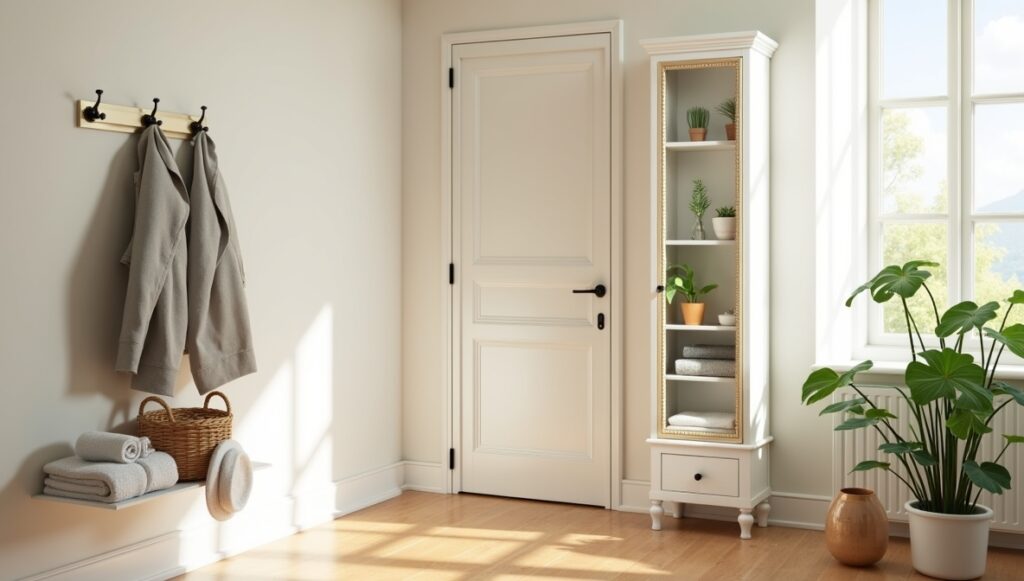
C. Creating Zones within Zones
In a small apartment, it’s important to create distinct functional areas. This can help you make the most of your space and keep it organized.
- Furniture Arrangement: Use furniture to define different zones. For example, a sofa can separate the living area from the dining area.
- Rugs: Use rugs to delineate different zones. A rug under the dining table can define the dining area, while a rug in the living room can anchor the seating area.
- Strategic Storage: Use storage furniture to create boundaries. A bookshelf can serve as a room divider, separating the living area from the bedroom.

V. Personalizing Your Tiny Haven: Infusing Style and Comfort
A. The Power of Textiles
Textiles can add warmth, texture, and personality to a small space. Here’s how to use them effectively:
- Rugs: Choose the right size rug for your space. A rug that’s too small can make the room feel disjointed, while a rug that’s too large can overwhelm the space.
- Throws and Pillows: Add throws and pillows to your sofa or bed to create a cozy, inviting atmosphere. Mix and match textures and patterns for added interest.
- Curtains: Use curtains to add softness and color to your windows. Choose lightweight fabrics that allow light to filter through.
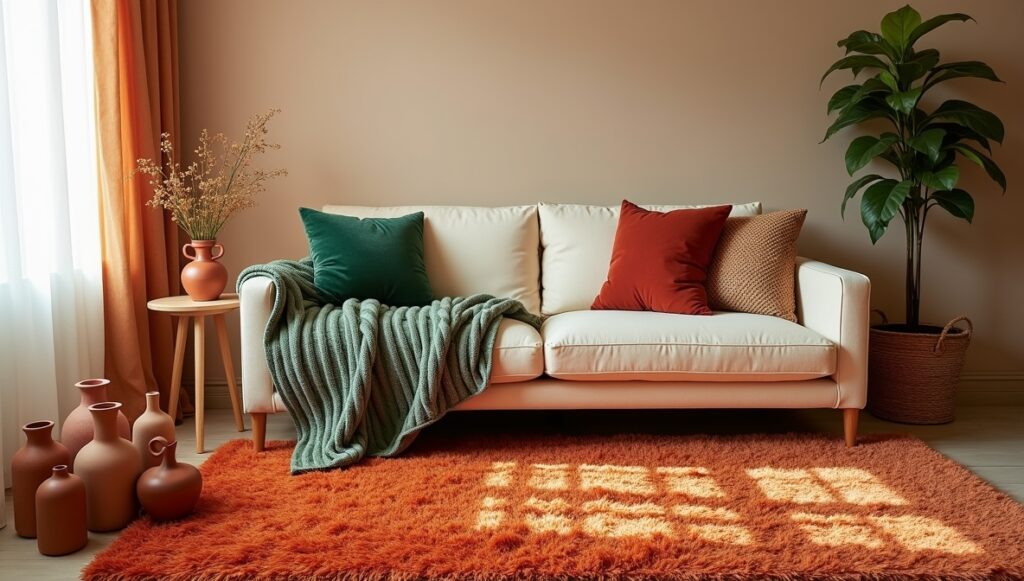
B. Greenery and Natural Elements
Plants and natural materials can bring life and tranquility to a small space.
- Low-Light Plants: If your apartment doesn’t get a lot of natural light, choose plants that thrive in low-light conditions, like snake plants, pothos, or ZZ plants.
- Natural Materials: Incorporate natural materials like wood, stone, or rattan into your decor. A wooden coffee table or a rattan chair can add warmth and texture.
- Small-Scale Greenery: If you don’t have space for large plants, consider small potted plants or succulents. They can be placed on shelves, windowsills, or tables.
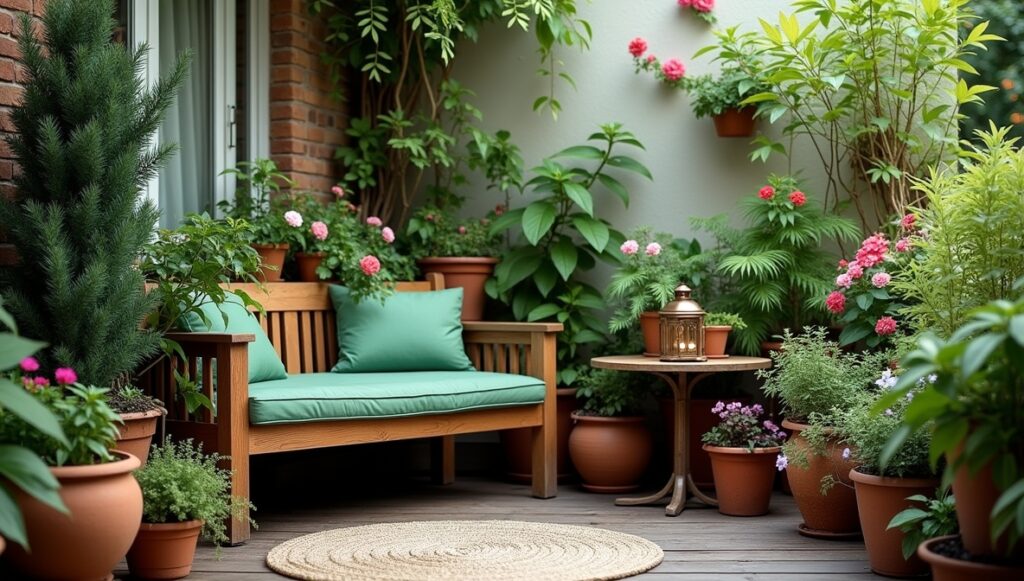
C. Curated Collections and Meaningful Decor
In a small space, every item should serve a purpose or bring you joy. Here’s how to curate your decor:
- Display Meaningful Items: Choose decor that has personal significance, like family photos, travel souvenirs, or handmade items.
- Edit Your Collections: If you have a collection of items, like books or figurines, edit it down to your favorites. Display them in a way that’s visually appealing and doesn’t clutter the space.
- Rotate Decor: To keep your space feeling fresh, consider rotating your decor seasonally. This allows you to enjoy different items without overcrowding your space.

Conclusion: Living Large in a Small Space – A Mindset Shift
Living in a small apartment doesn’t mean you have to sacrifice style or comfort. With a little creativity and some smart hacks, you can transform your compact space into a functional and beautiful home. From strategic mirror placement to multi-functional furniture, there are countless ways to make the most of your small space.
Remember, the key to successful small space living is a mindset shift. Embrace the challenges and see them as opportunities to get creative. By personalizing your space and making it work for your needs, you can create a home that’s not only stylish but also uniquely yours.
So, go ahead and start experimenting with these hacks. Whether you’re adding a vertical garden, decluttering with the KonMari method, or investing in a Murphy bed, you’ll be amazed at how much you can achieve in a small space. After all, small spaces can be just as comfortable and stylish as large homes—it’s all about how you use them!

